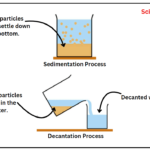30 Features of Indian Constitution MCQ Questions
Welcome to this challenging features of Indian Constitution MCQ quiz! In this quiz, we’ve compiled the top 30 multiple-choice questions based on the features of Indian Constitution. These MCQ quizzes will test your knowledge and boost your preparation for UPSC, SSC, Railway, and State PCS exams. You will get the scorecard at the end of quiz test.
So, are you ready to score 30/30? Let’s find out how well you really know the features of Indian Constitution. Let’s begin with question number 1.👇
1. The three-tier system of government in India refers to:
A. Union, State, and Judiciary
B. Union, State, and Local Government
C. Legislature, Executive, and Judiciary
D. Union, State, and President
b
The Government of India follows a three-tier system: Central (Union) Government, State Governments, and Local Governments (Panchayati Raj in rural areas and Municipalities in urban areas).
2. The three-tier Panchayati Raj system was first recommended by which committee?
A. Sarkaria Committee
B. Kothari Committee
C. Ashok Mehta Committee
D. Balwant Rai Mehta Committee
d
In 1957, the Balwant Rai Mehta Committee recommended a three-tier Panchayati Raj system: Gram Panchayat at village level, Panchayat Samitis at block level, and Zila Parishads at the district level. The committee was formed to improve the working of community development programs by increasing public participation.
3. Which Constitutional Amendment Act gave constitutional status to Panchayati Raj Institutions (three-tier government in rural areas)?
A. 42nd Amendment
B. 44th Amendment
C. 73rd Amendment
D. 74th Amendment
c
The 73rd Amendment Act, 1992, gave constitutional recognition to Panchayati Raj and introduced Part IX of the Constitution (Articles 243–243O).
4. The 74th Constitutional Amendment Act of 1992 is related to
A. Rural Panchayats
B. Cooperative Societies
C. Urban Local Bodies
D. None of the above
c
The 74th Constitutional Amendment Act of 1992 is related to municipalities (Urban Local Bodies). It aims to constitutionalize and strengthen urban local governance in India.
5. In the Panchayati Raj system, the Gram Sabha, also known as a Village Assembly, consists of:
A. All elected members of Gram Panchayat.
B. All adult members registered in the electoral rolls of a village or a group of villages.
C. All the residents of the village.
D. The members nominated by the Sarpanch.
b
The Gram Sabha is the foundation of the Panchayati Raj system. It is a general body that includes all persons aged 18 years or above whose names are registered in the electoral rolls of a village (or group of villages).
6. The provisions of the 73rd Constitutional Amendment apply to:
A. All the states and Union Territories without exception.
B. All the states except Nagaland, Meghalaya, Mizoram and certain other areas.
C. Only the scheduled areas of India.
D. Only the Union Territories.
b
The 73rd Amendment, which deals with Panchayati Raj institutions, does not apply to Nagaland, Meghalaya, Mizoram, some scheduled areas, and certain other regions due to local conditions.
7. Which country has the lengthiest written Constitution in the world?
A. USA
B. France
C. South Africa
D. India
d
The Indian Constitution is the longest written Constitution in the world. It originally had 395 Articles, 22 Parts, and 8 Schedules in 1950. Today, it has 470+ Articles, 25 Parts, and 12 Schedules.
8. Which of the following is a reason for the length of the Indian Constitution?
A. Detailed provisions for Centre–State relations
B. Integration of Fundamental Rights & Directive Principles
C. Inclusion of Emergency Provisions
D. All of the above
d
The Indian Constitution is long because it provides detailed governance rules, covers Fundamental Rights, Directive Principles, Emergency Provisions, and local governance (73rd & 74th Amendments).
9. India is described as a “Union of States” in which Article of the Constitution?
A. Article 356
B. Article 1
C. Article 370
D. Article 3
b
Article 1 of the Indian Constitution states: “India, that is Bharat, shall be a “Union of States”. This reflects a federal structure with a strong central government.
10. Which of the following is a federal feature of the Indian Constitution?
A. Minimum two tiers of governments
B. Distribution of powers between Centre and States
C. Supremacy of the Constitution
D. All of the above
d
India has federal features like three tiers of government, division of powers between centre and states, written constitution, rigidity of constitution, independent judiciary, and a supreme constitution.
11. The distribution of powers between the Union and the States in the Constitution of India is based on which Act?
A. Government of India Act, 1858
B. Government of India Act, 1909
C. Government of India Act, 1919
D. Government of India Act, 1935
d
The federal features and division of powers in the Constitution are mainly adapted from the Government of India Act, 1935.
12. Who described the Indian Constitution as “federal in form but unitary in spirit”?
A. B. R. Ambedkar
B. Granville Austin
C. K. C. Wheare
D. Jawaharlal Nehru
c
Constitutional expert K. C. Wheare called the Indian Constitution quasi-federal, because it has federal features with strong unitary features.
13. Which of the following is a unitary feature of the Indian Constitution?
A. Single citizenship
B. All-India Services
C. Emergency provisions
D. All of the above
d
The Indian Constitution contains a large number of unitary or non-federal features like a strong Centre, single Constitution, single citizenship, all Indian services, and emergency provision.
14. Why is the Indian Constitution called “federal in form but unitary in spirit”?
A. States can secede from the Union.
B. Centre is stronger than the States.
C. States are more powerful than the Centre.
D. Judiciary controls both Centre and States equally.
b
India’s federalism is tilted towards the Centre.
15. Which of the following countries follows the Presidential system of government?
A. India
B. United Kingdom
C. United States of America
D. Canada
c
The USA is the classic example of a Presidential system, where the President is both Head of State and Head of Government.
16. Which of the following is the main feature of a Presidential government?
A. Collective responsibility of the executive to the legislature.
B. Separation of powers between executive, legislature, and judiciary.
C. Nominal executive head
D. Dual citizenship
b
In a Presidential system, powers of all three organs are strictly separated, unlike in a Parliamentary system.
17. In the Presidential form of government, the President is:
A. Directly elected by the people (or electoral college)
B. Appointed by the legislature
C. Hereditary head
D. Nominated by judiciary
a
The President is directly elected, either by the people or an electoral college representing them.
18. Which of the following features is found in a Presidential government but not in a Parliamentary government?
A. Dual government
B. Responsible government
C. Fixed tenure of executive
D. Collective responsibility
c
In the Presidential system, the President has a fixed tenure, unlike in the Parliamentary system where the government can fall anytime if it loses majority.
19. Which of the following is a unique feature of a Parliamentary Government?
A. Fixed tenure of the executive
B. Presence of both nominal and real executives
C. Separation of powers between executive and legislature
D. Judiciary is the real executive authority
b
In a Parliamentary system, there is a nominal head (President/Governor) and a real head (Prime Minister/Chief Minister).
20. The principle of “collective responsibility” in the Indian Parliamentary system means:
A. All ministers are individually answerable to the President.
B. All ministers are collectively answerable to the Supreme Court.
C. The Council of Ministers is collectively responsible to the Lok Sabha.
D. The Prime Minister alone is responsible to the Parliament.
c
Article 75(3) states that the Council of Ministers shall be collectively responsible to the Lok Sabha.
21. The real executive authority in a Parliamentary form of Government is vested in:
A. The President
B. The Prime Minister
C. The Chief Justice of India
D. The Speaker of Lok Sabha
b
The President is only the nominal head. The Prime Minister is the real executive and leads the Council of Ministers.
22. Which of the following is not a feature of the Parliamentary system?
A. Majority party rule
B. Collective responsibility of the executive to the Legislature
C. Fixed tenure of the executive
D. Leadership of the Prime Minister
c
In Parliamentary government, the executive can be dissolved before completing 5 years if it loses majority support.
23. Dissolution of the Lower House (Lok Sabha) is an important feature of Parliamentary Government. It signifies:
A. The President’s power to dissolve the Rajya Sabha.
B. The Prime Minister’s power to dissolve the Cabinet.
C. The possibility of early elections if the government loses majority.
D. The Supreme Court’s authority over Parliament.
c
In a Parliamentary form of government, the Lok Sabha (Lower House) can be dissolved before completing its 5-year term if the ruling party or coalition loses majority support (fails a no-confidence motion). This leads to early elections, allowing people to elect a new government.
24. Which of the following countries has an unwritten constitution?
A. India
B. United States of America
C. United Kingdom
D. Canada
c
The UK does not have a single written document called a constitution. Countries like India and USA have written constitutions. Canada has a partly written constitution, combining statutes and conventions.
25. Which of the following countries has a federal form of government?
A. China
B. Cuba
C. Belgium
D. USA
d
USA has a federal form of government.
26. The English Crown is an example of:
A. Real executive
B. Nominal executive
C. Judicial authority
D. Collective executive
b
In the UK Parliamentary system, the Crown (King/Queen) is the nominal head of the state. In India, where the President is the nominal executive and the Prime Minister is the real executive.
27. The declaration that “Democracy is a government of the people, by the people, for the people” was made by?
A. George Washington
B. Thomas Jefferson
C. Theodore Roosevelt
D. Abraham Lincoln
d
This famous phrase comes from Abraham Lincoln’s Gettysburg Address, delivered on November 19, 1863, during the American Civil War.
28. Which of the following is the most essential feature of the Parliamentary form of Government?
A. Sovereignty of the Parliament
B. Written constitution
C. Accountability of the executive to the Legislature
D. Independent judiciary
d
Independent judiciary
29. According to the Indian Constitution, which one of the following is supreme?
A. The Parliament
B. The Supreme Court
C. The Constitution
D. The President
c
In the Indian constitutional framework, the Constitution is supreme.
30. In the Indian constitutional framework, the executive is subordinate to the:
A. Judiciary
B. Legislature
C. Election Commission
D. Union Public Service Commission
b
In the Indian constitutional framework, the executive is subordinate to the Legislature.
Quiz Results
Total Questions: 0
Correct Answers: 0
Incorrect Answers: 0
Score: 0%






